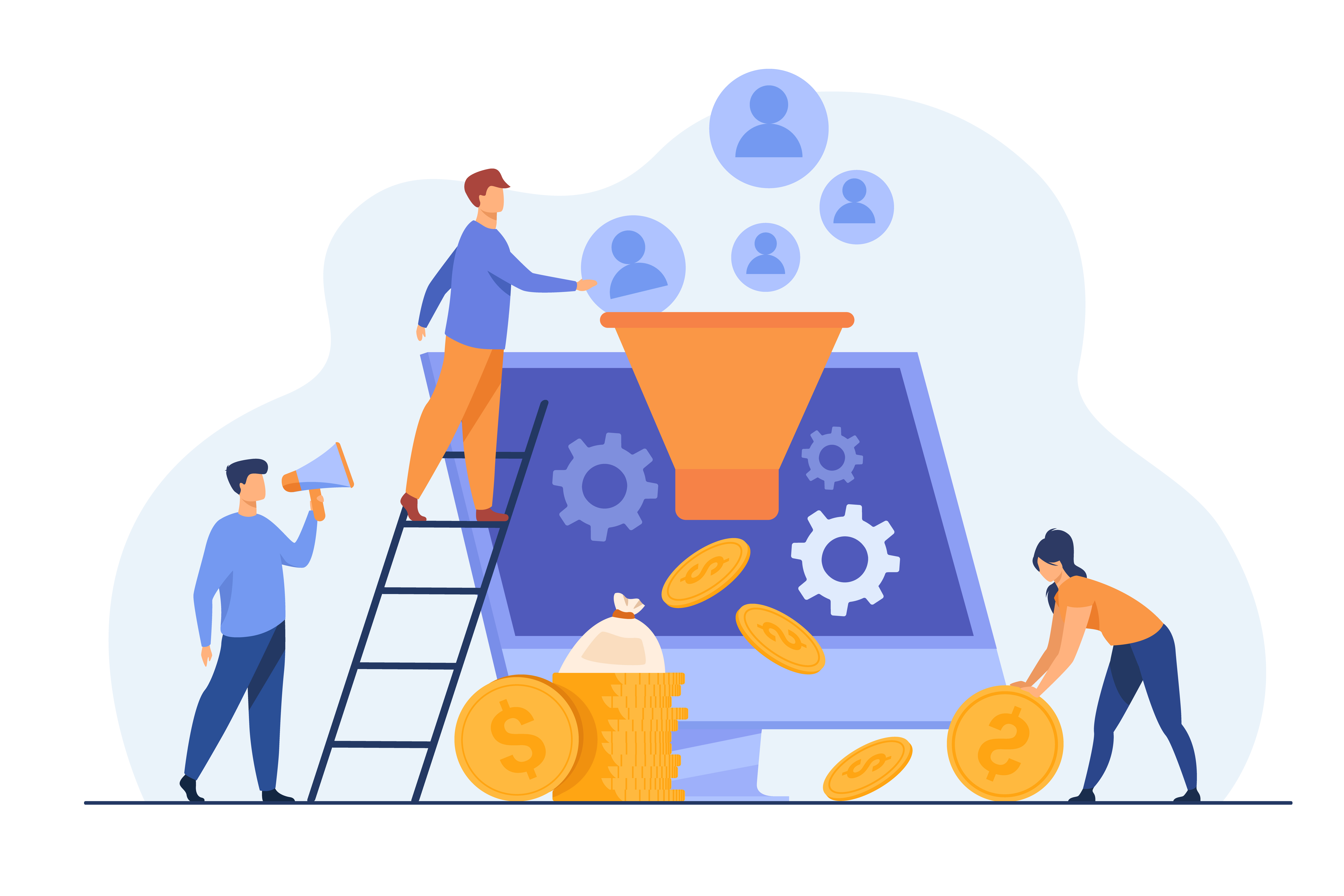Creating a successful business requires much more than one brilliant idea. You must work continuously to ensure customers purchase your product or service. But how do you ensure that people buy what you’re selling? A variety of sales and marketing tactics can be put in place, the most common and successful one being a sales funnel. If this is a new term for you or you don’t know much about how a sales funnel works, you’ve come to the right place.
This post will explain:
- What a sales funnel is?
- Why you need a sales funnel?
- The disadvantages to having a funnel?
- How you can calculate the effectiveness of your sales funnel?
- How you can build a sales funnel to double profits?
Let’s get started.
What is a Sales Funnel?
It’s a model depicting the customer journey from discovering the brand to finally purchasing the product. A sales funnel can also be described as a step-by-step process that turns prospective browsers into buyers. This process consists of a series of marketing actions whose purpose is to guide and support the customer’s buying journey. The three tiers of the sales funnel are directly linked to the three stages of the buyer’s journey, which are:
- Top of the funnel: When the buyer realizes they require a product/service or have a problem that needs to be solved. Your brand needs to stand out in the market. If the customer is aware of your brand, they may reach out.
- Middle of the funnel: When the company attempts to solve the buyer’s problem by offering their product/service.
- Bottom of the funnel: This should lead directly to the purchase decision. With the trust already built, convince them why your product is the one they need, so they become a client.
Each stage of the funnel is designed in such a way that it pulls the buyer further in. There may be more stages depending on the type of your business.
Why do you need a Sales Funnel?
It helps you differentiate between the activities of your marketing and sales teams. Such division of work helps in ascertaining the individual performances of the sales and marketing teams, so you can identify the inefficiencies in the process. Marketing may bring quality leads and sales might not be efficient enough to convert them and vice versa. You’ll know where to hit to make the process work. Tracking the performance of your teams will also become easier and you’ll be able to identify your best performers who can further set the best practices standards. Plus you’ll also know which Sales reps need to be trained more.

Additionally, with a sales funnel in place, the brand gets to interact with the customer on a deeper level. Along with helping you understand the customer’s needs better, this engagement will also ensure that by the time the customer buys your product, they already have your brand positioned as a positive solution in their head. So they will themselves act as promoters of the brand.
Is there any Disadvantage to having a Sales Funnel?
Sales Funnels can be a tad bit expensive to set up. They can also take a while to set up and it’s not something you can set up and forget. You’ll need to monitor and look after your funnels to ensure the investment you make on these pays off.
How do you know if your Sales Funnel is actually effective?
The following metrics can help you evaluate how effective your sales funnel is:
- Conversion Rate: It will show how many people were actually interested in buying your product/service, thereby giving you an indication of how well your sales funnel is performing.
- Consumer Lifetime Value: It predicts how much money you’ll make from a customer over the course of their relationship with your company. If your CLV does not increase over the lifetime of your relationship, your sales funnel needs to be fixed.
- Customer Acquisition Cost: If the CAC does not decrease over time, you are losing money and your sales funnel needs to be improved.
- Click-Through Rate: An ad’s click-through rate indicates how relevant it is to its target audience. In general, the higher the rate, the better.
How to Build a Sales Funnel that Doubles your Profits
- The prerequisite to building a solid funnel is to understand and analyze the behavior of your audience. This will heighten customer relationships and increase the power of your sales funnel.
- Folks need to be aware of your product, so this second step involves capturing the attention of your audience. Through strategic marketing approaches, you can attract them to the first stage of your funnel.
- A landing Page needs to be in place so when your customers visit your socials, they are prompted to visit that page that will encourage them to make a purchase through offers.
- You can use Funnel Building software that can kickstart the buyer’s journey by automatically taking care of certain aspects like payment gateways and follow-up emails.
- Merely capturing your audience’s attention will not be enough to compel them to make a purchase. You need to ensure that they are engaged and interested in your brand the whole way. This can be achieved through digital marketing services, by creating high-quality blogs & videos, hiring influencers to promote your products, and using your socials to interact with your audience.
- Ensure that your existing customers are not neglected in the process of acquiring new ones. Provide rewards and discounts to increase brand loyalty which will keep them coming back for more.
Closing Thoughts
If you want to take your business to the next level, a well-designed sales funnel is essential. The success of your business depends on how many prospects you can guide through their buyer’s journey, from the top of the funnel (awareness) to the bottom of the funnel (purchase).

